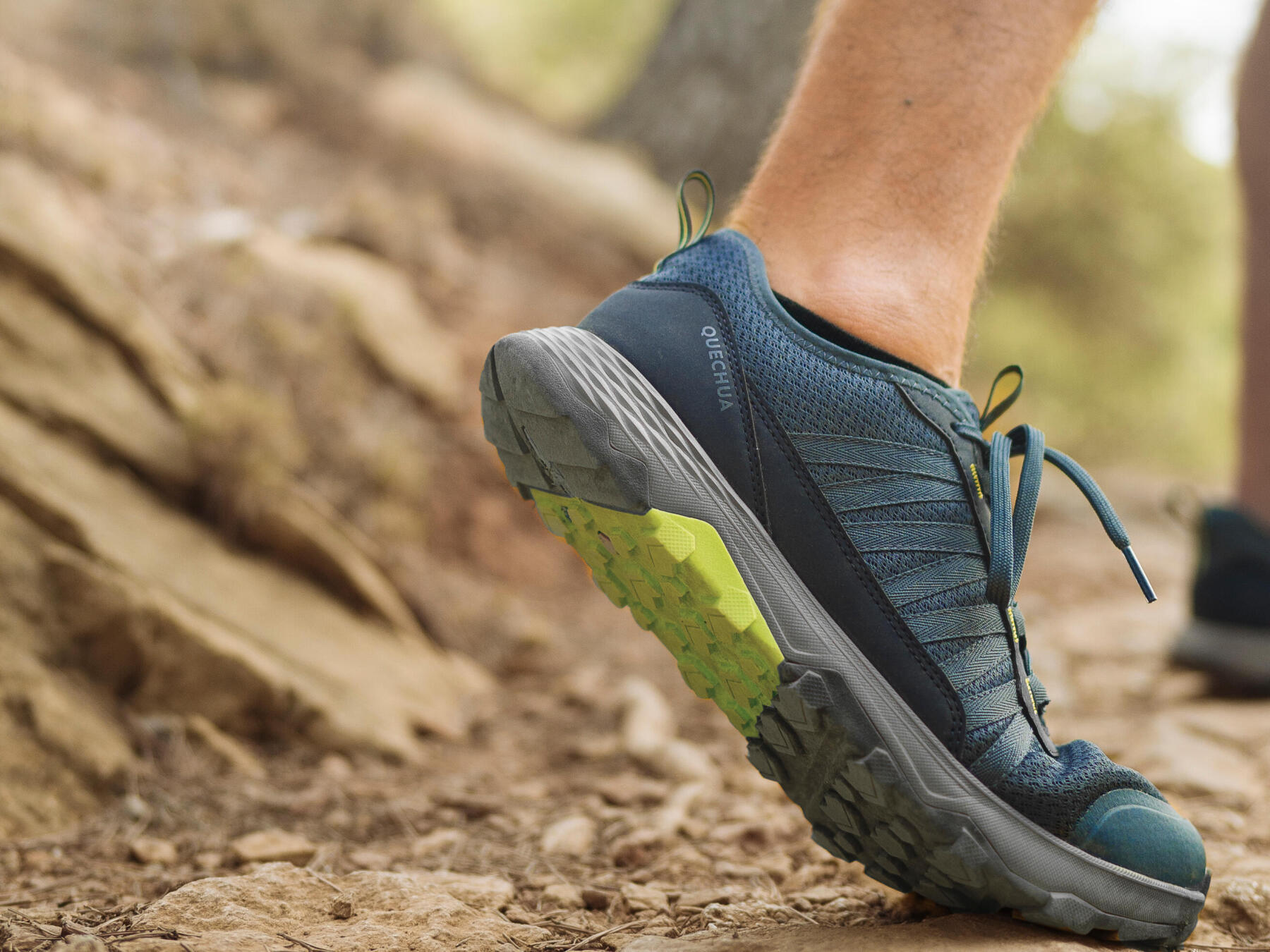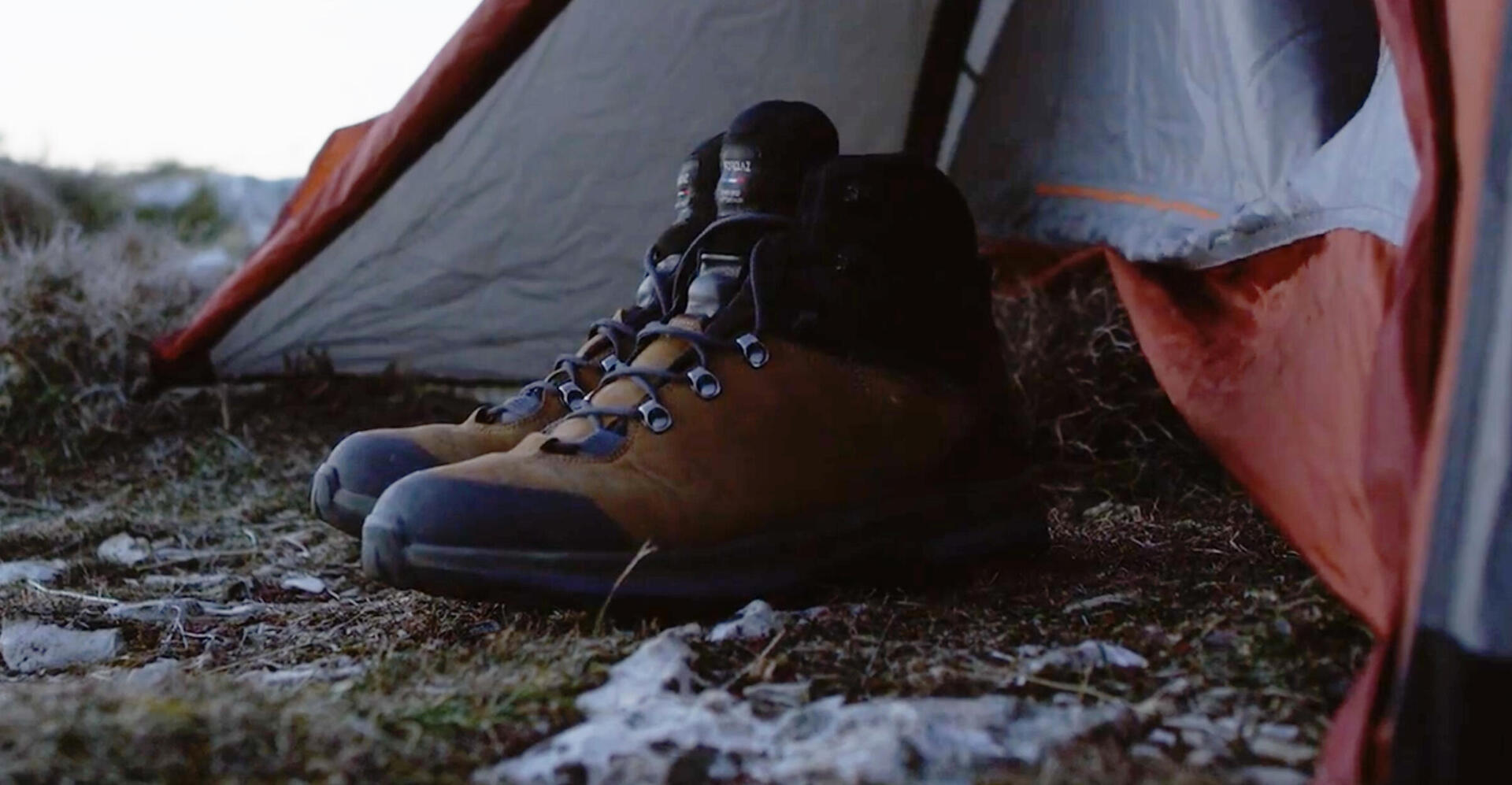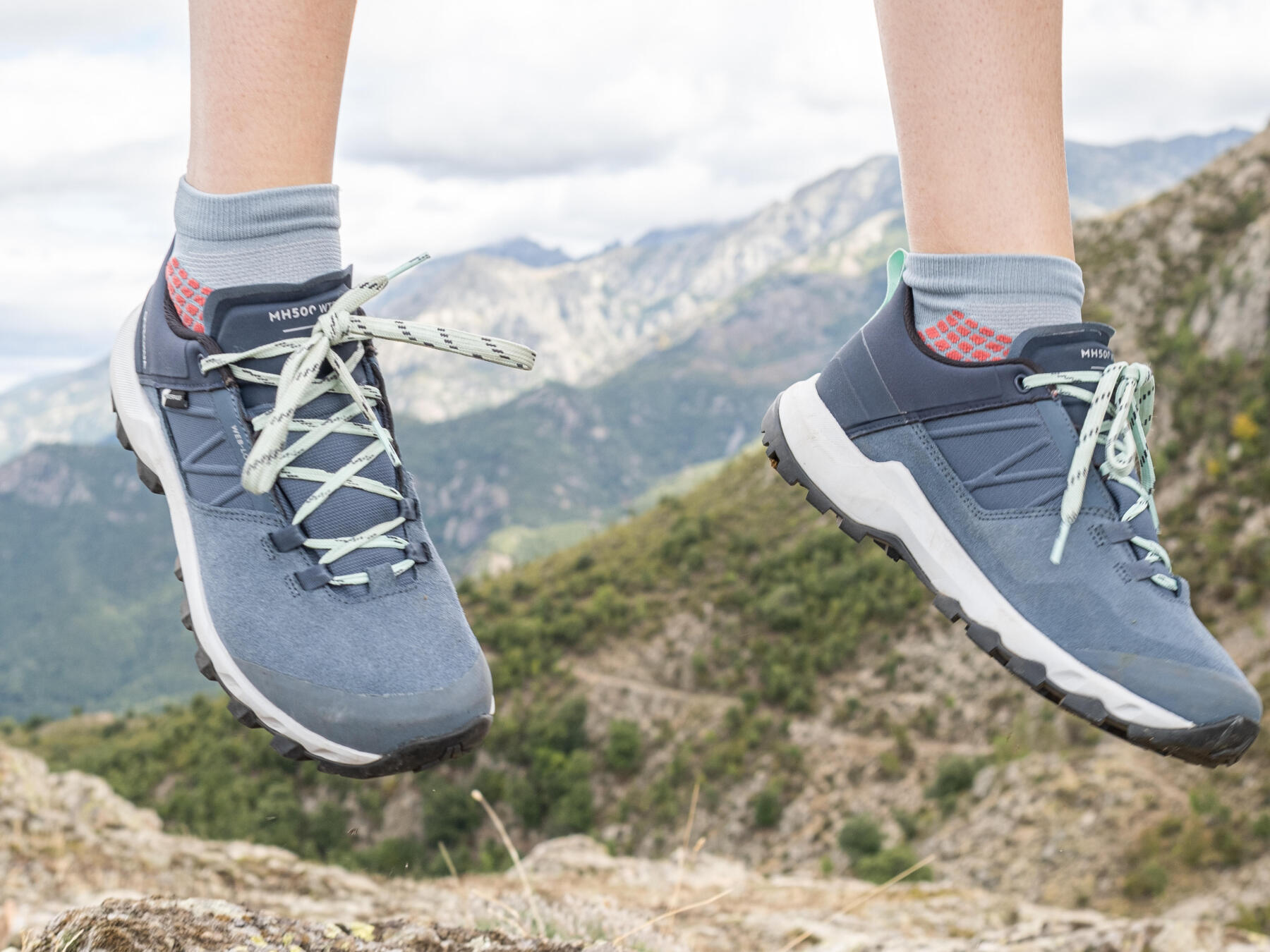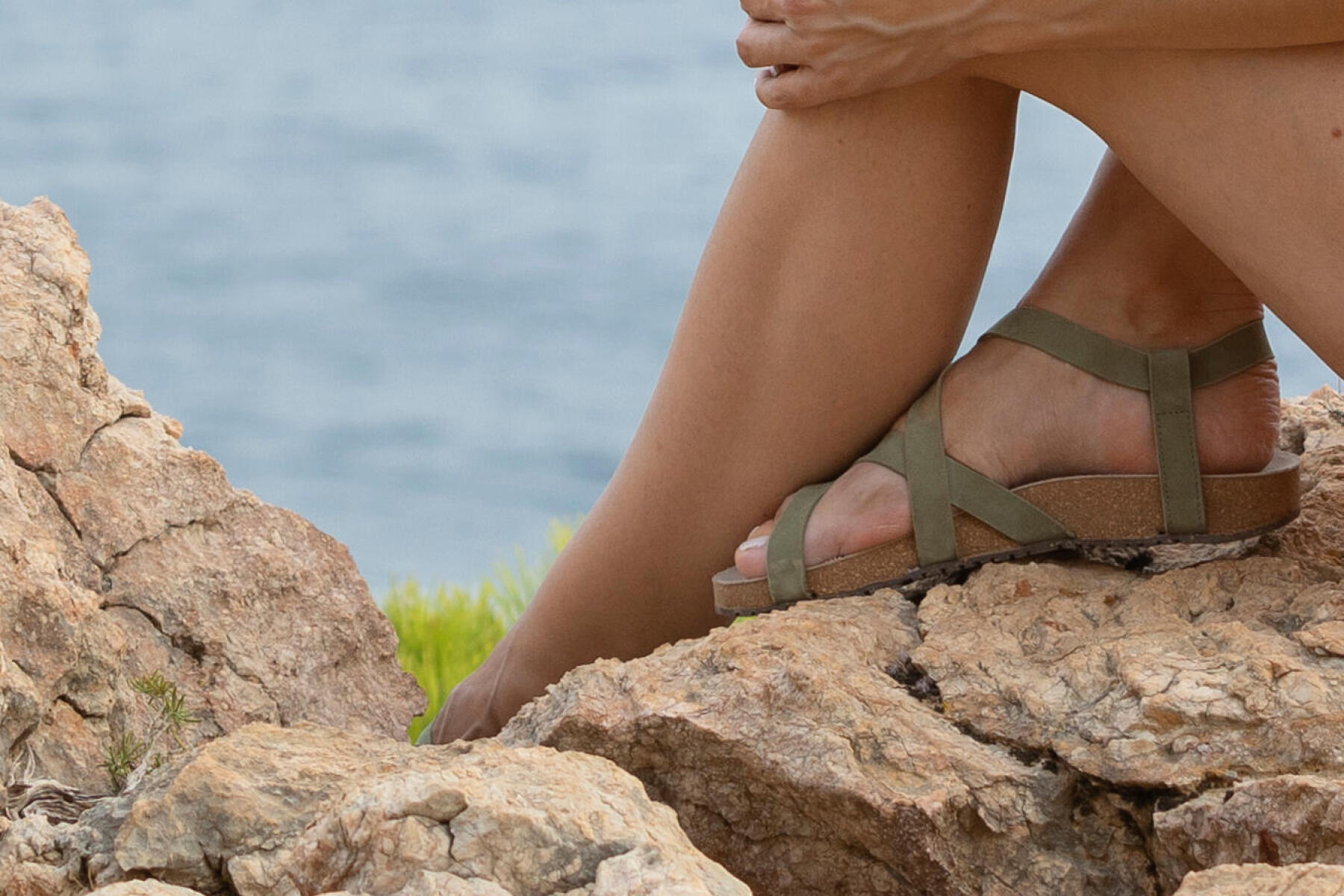After each hike
Mud, water, moisture, perspiration... Your boots have a hard life during your hiking trips.
Three little tips, easy to apply, as soon as you take off your boots:
- knock your soles against each other to get rid of the remaining dust and mud, & shake them upside down to remove any dust or stones that may have slipped inside,
- remove any stones that could have lodged between the treads and may affect the grip of your sole,
- loosen the laces, open the tongue, remove the insole & air your boots in a dry place.
After each hike, your feet look forward to getting some fresh air. So don't forget to do the same with your boots, too ;)
These little tips can become a matter of habit, quick and easy to do. Depending on the condition of your boots, more advanced cleaning may be required. We’ll tell you all the steps to take below in this article.






